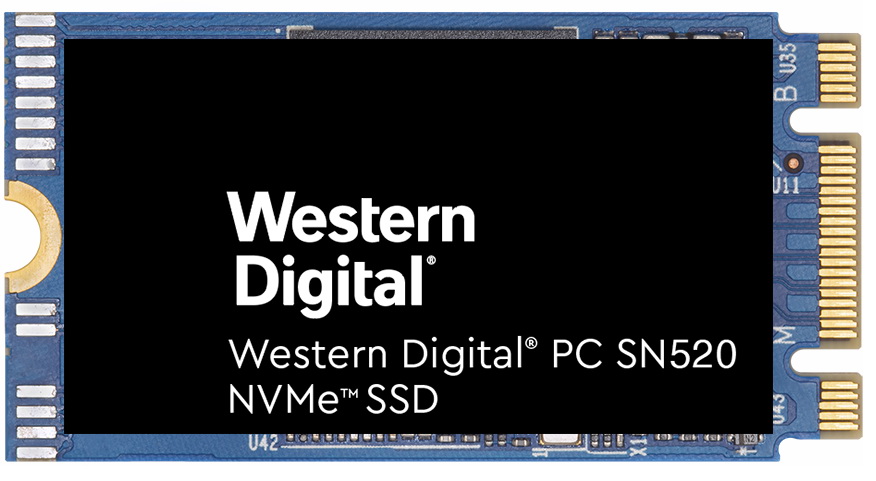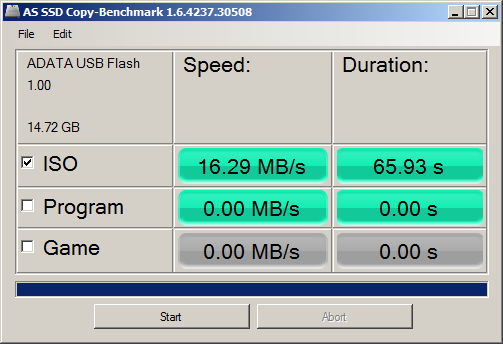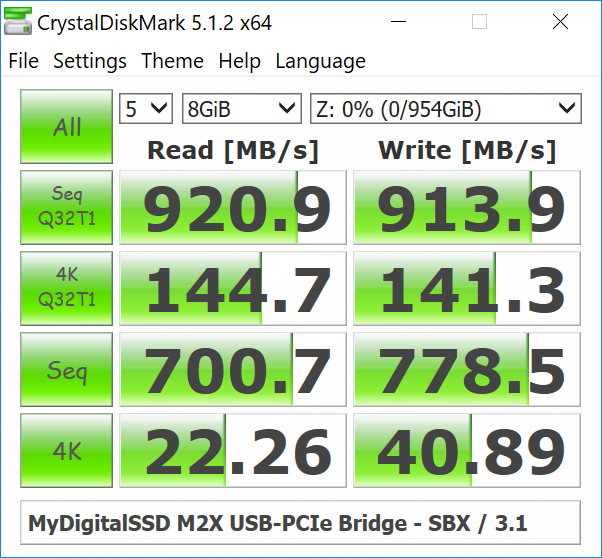
I've been looking at performance numbers while Emby is recording/watching on the Synology and believe the 2 key metrics to watch/benchmark are the IOPs and wait state related items including queue. Having the whole system backed up will give me a lot of freedom to get aggressive without worry. What I think a 2nd stick would likely be best is using the GUI and making it a read only cache for general use. Then maybe I can try adding the 2nd stick in and RAID the 2 sticks together but doubt this will have much impact overall. The above should have the core info we've been looking for.

This would be an extremely fast drive to use for transcoding and maybe the best option overall and we'll find out. I previously did this in DSM 6 but haven't tried it in DSM 7 yet. Instead I'll try to use the command line to set it up as a 5th disk. Then I'm going to add one nvme stick in the Synology but not configure it in Synology GUI. That will be interesting to see how the USB3 attached storage compares! What I will do is remove both nvme sticks I presently have installed and bench mark this. The reason I mention this is that I want to copy/move what I have on my Synology to this new storage space which will allow me to try a few other things as well on my Synology box without worry.
#USB 3.0 SSD BENCHMARK FREE#
I've got 6 HGST Ultrastar SAS 12Gbps drives that I ordered that should be delivered tomorrow by Fedex that are going to be added to a ZFS/Ceph Storage pool 4+2 that should give me 60TB or so of free space. I want to see to if this makes any difference at all with the same SSD installed in it attached via USB3.

I ordered another USB Type C 10Mb housing/controller that's back ordered from the Holidays but should be here this week. I've got some numbers using USB3 attached SSD with 2 different controllers. Some links that show the use of these tools

Will be interesting to see how this changes. Then adding a playback, another playback etc. These will be perfect for watching while doing a recording, then 2, then 3. %util-Percentage of elapsed time during which I/O requests were issued to the device. W_await-The average time (in milliseconds) for write requests issued to the device to be served. R_await-The average time (in milliseconds) for read requests issued to the device to be served. Iostat is a real time monitor that shows lots of really good information such as:Īvgqu-sz-The average queue length of the requests that were issued to the device.Īwait-The average time (in milliseconds) for I/O requests issued to the device to be served. I was able to find a few useful tools that give us what I think we need. I can probably do a copy from HDD to SSD while using two computers copying movies to the SSD to see if the two Ethernet ports gets maxed out before the HDD & Ethernet copies max the SSD out.ĭo any of you guys know of any type of performance test I could get to run on the Synology for a couple of generic disk benchmarks? The SSD seems to be faster then the RAID drive as doing a copy from HDD to SSD didn't seem to hit a max. The 920+ only has to 1 Gb Ethernet ports which I have bonded. Worse it doesn't do the tests on external drives. The built in disk benchmark only tests individual drives and not the RAID volume.
#USB 3.0 SSD BENCHMARK WINDOWS#
I'll pull it later and connect it up to a Windows computer to see what size it used as well as try changing it to see if that makes any difference for the small TS files written during transcoding. I formatted the drive in Synology as type ext4 but it's didn't let me choose the sector size. At present I have the 1 TB Samsung drive hooked up to my 920+ NAS. I have two different types of 2.5" to USB3 adapters so I can test those as well to see if either is better. Then also try and use the SSD for Transcoding and possible DVR as well to see if it helps or not especially if you already have a read/write cache setup.

I have mentioned a few times in the forums I was going to do this to get some basic performance numbers to see how fast the SSD would be via USB3 compared to the RAID volume.


 0 kommentar(er)
0 kommentar(er)
